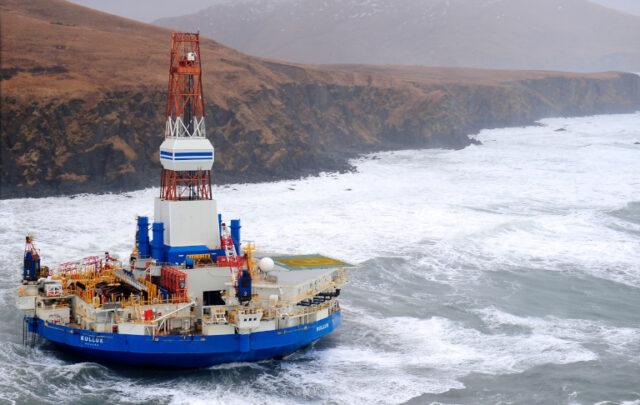(Note: Commentaries do not necessarily represent the position of ASPO-USA.)
Back in the 1960s and 1970s, the country that was the “big growth story” was the Soviet Union. Its oil consumption grew by leaps and bounds. Its space program grew; its military program grew; and it became much more industrialized. But then something happened to stop the amazing growth story. The Soviet Union became the Former Soviet Union (FSU) in late 1991, and even before that, oil production and consumption slowed.
It is not the purpose of this article to analyze precisely what happened, but it appears that at least part of the problem was a drop in the price of oil, starting about 1981 (Figure 1).
This drop in oil price made it become much less profitable to drill new oil wells. Also, the Soviet Union was an oil exporter, and at a lower price, it earned less profit for the oil it exported. Given these headwinds, oil production stopped rising, and by 1988, began to fall. Oil production did not start rising again until the early 2000s, when oil prices began rising again and a different political system was in power.
As oil production dropped in the 1988-1991 period, FSU oil exports plummeted (Figure 2 – Difference between production and consumption). Given the combination of a low quantity of oil exported, and low sales price of oil exports, the FSU found itself in financial difficulty–it could not afford to pay for food imports, which it badly needed, and the country collapsed.
I’m sure this is only part of the story–but the question that comes to mind is, “How different would history be, if the Soviet Union had somehow held things together–perhaps with other sources of income, or an International Monetary Fund loan–so that its oil consumption behaved more like that of the rest of the world?” Instead of remaining relatively flat in the 1985 to 1990 period, and dropping in the 1991 to 1994 period, what if oil consumption had resumed growth after 1985, the way the rest of the world’s oil consumption grew?
If the Soviet Union had not collapsed, one of the things that likely would have happened is that world oil prices would have headed higher, sooner, because Soviet demand for oil would have helped to hold world oil prices up. It is not clear which oil might have been pumped out sooner, but it seems likely that if somewhere there was slack in the system, oil would have been pumped out sooner, if the consumption (demand) of the Former Soviet Union had not collapsed and stayed low.
Figure 3 shows an estimate of what world oil production might have looked like, if FSU’s oil consumption, instead of dropping and remaining low for many years, had followed more of a “normal” pattern (after a plateau in the 1980-1985 period, oil consumption had risen at the same rate as world consumption rose, instead of entering into a plateau followed by collapse). This could only have happened, of course, if oil producers could really have extracted enough oil to meet this higher demand.
But then the question comes as to whether we might not have hit the plateau in world oil production sooner. With the higher oil production/consumption, liquids consumption in the year 2000 would have reached 84.9 million barrels a day, more equivalent to 2006 actual liquids consumption according to BP. If maximum production is reached based on the “size of the tap,” perhaps we would have hit maximum oil consumption several years earlier. If this had happened, the “Higher FSU Growth Scenario” perhaps might have flattened earlier than shown on the Figure 3, and the down slope might have started by now. The “second hump” in Russian oil production might have started sooner, so that instead of Russian production now being flat to increasing, it might be on the down slope.
Other fuels seem to have also been affected by the FSU collapse (Figure 4). Neither coal nor natural gas has yet hit the level of consumption in 1991. This lower internal consumption of natural gas and coal left more fossil fuels in the ground, helping world CO2 emissions, and enabling more FSU exports later, without the need to add as much more new productive capacity, and new pipelines, as would otherwise be the case. Russia (with the assistance of other FSU countries) is now a major exporter of natural gas to Europe. Russia is also an exporter of coal, with exports almost tripling since 2000, and with a new contract signed to sell more coal to China.
One of the things that has enabled these exports is the fact that electricity production / consumption of the Former Soviet Union is lower now than it was in 1991 (Figure 5). If the FSU’s own use of electricity were growing rapidly, it would have needed more of its own natural gas and/or coal for electricity production.
Since 1994, the United States has purchased recycled Russian bomb material through the Megatons to Megawatts program. If Russia had not experienced a big drop in electrical consumption in the 1991 to 1994 period, a person wonders whether this bomb material would have become available. If nothing else, the FSU could have used it to fuel more electrical production for its own use. The world could no doubt have mined and enriched more uranium, but uranium prices would have needed to be higher. If uranium limits are indeed an issue, we would be farther on our way to reaching “peak uranium.”
The thing that surprised me about the 1991 collapse of the Soviet Union is how long-lasting the effects have been, in terms of FSU fuel consumption. If I had not looked at the numbers, I would have assumed that by now, fuel consumption of all types would have rebounded, at least to 1991 levels, and perhaps far past these levels. The fact that FSU’s consumption has rebounded only partially has enabled the world’s oil supply to go farther, and also seems to have helped with exports of other types of fuels.
Gail Tverberg is on the editorial board of The Oil Drum and writes on her own blog, Our Finite World.







